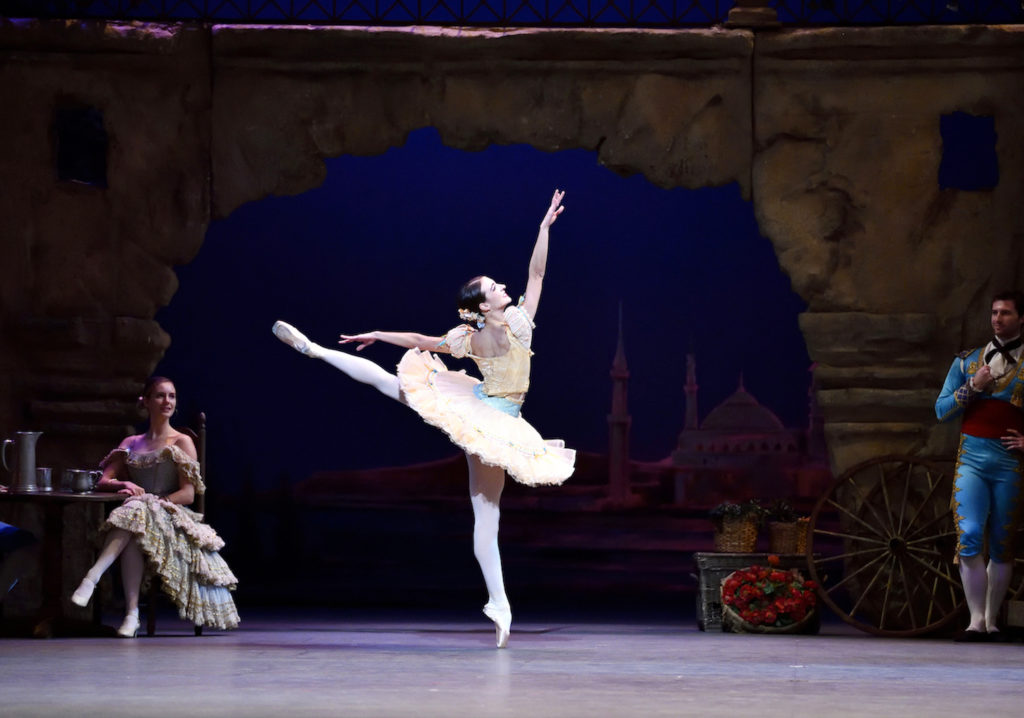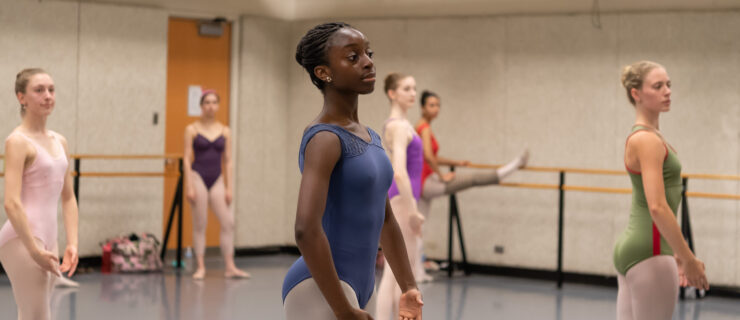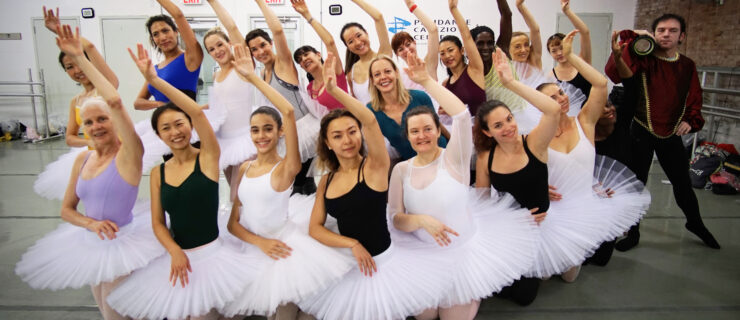Sewing Tips and Tricks to Make It Through Your Summer Intensive
When American Ballet Theatre’s April Giangeruso was 14, her mom, a professional seamstress, taught her how to sew the ribbons and elastics on her pointe shoes herself. “I remember in the beginning hating it, but then I started taking pride in the fact that I could do it myself,” says the corps dancer and founder of the dancewear line Chameleon. “It made me feel more independent and empowered.”
Sewing is simply part and parcel of being a dancer, from repairing torn leotard straps to fixing snapped shoe elastics. Yet many young bunheads head off to summer intensives without knowing how to care for and mend their own dancewear. We’ve compiled some expert tips and tricks to help you get the most out of your tights, leos and shoes.

Sewing Kit Must-Haves
Keeping a stocked sewing kit in your dance bag is crucial for on-the-go fixes. Boston Ballet wardrobe supervisor Ezra Lovesky recommends keeping sharp sewing needles ranging in length and width, and good, sturdy thread. Gutermann-brand thread is his go-to, but he also keeps HY-MARK on hand for heavier repairs. Giangeruso swears by Bunheads’ needles, which are tough enough for pointe shoes—she pairs them with waxed floss. The last two items in your sewing kit should be a small but sharp pair of scissors and a bottle of clear nail polish.
Tear-Free Tights
“Runs in nylon tights definitely happen,” says Lovesky. “The best thing you can do is to treat them immediately.” Lovesky turns to Fray Check, a liquid sealant available at any fabric store. But any clear nail polish will similarly get the job done. If you like to trim off the toes of your tights, preempt running by using the nail polish to paint just past where you want to make the cut. “Then it will be built in not to fray,” says Lovesky. He notes that polish will darken the nylon slightly upon drying—so when it comes to performances, it’s best to stick to a clean, rip-free pair.
If Giangeruso sees a small hole that hasn’t yet started to run, she darns it together with a few quick stitches. The key is to take the tights off right away—don’t try to sew them on your body. “When it’s on your leg it’s too stretched and will run more, so wait until it’s in a relaxed state,” she says. “Then leave the thread a little bit of slack, so it doesn’t pull once it’s stretched on your body.”

Long-Lasting Leotards
In Lovesky’s experience, leotard straps often need the most repair. To mend a snapped strap, he relies on the backstitch. (Countless videos are available for reference online, but the basics are to sew a single stitch, and then when you’re coming up with the needle, push through the half point of the stitch you just created, so every stitch grows by half.) “It’s the closest you can get to a sewing machine, and the most secure quick stitch you can do to hold everything together.” He sews the strap back on from the inside of the garment with just one row of back-stitches across. If a leo tears on the seam, Lovesky says any regular sewing stitch (again sewn from the inside) will be fine.
Tears on the body of the leotard? “At that point, the only thing you can do is patch it,” says Lovesky. “Sewing it together will add a great deal of tension to the already degraded stretch material and it will just rip again.” He recommends cutting a square of any kind of stretch fabric (perhaps that old leo in the bottom of your drawer that you never wear anymore), stretching it out with your hands to break the fibers, and then securing it to the inside of the garment with a circle of stitches around the tear. “Give it a good tug, and you’ll see if your patch will hold or if you’ll need more stitches,” he adds.
Sharp-Looking Shoes
Shoes are part of a dancer’s instrument, so sewing preferences tend to be deeply personal. Giangeruso swears by a knotting stitch, which she sews into a U-shape around the bottoms and sides of her ribbons and elastics. “I’ve been using it for 15 years and never had a problem,” she says. “It really changed me having to worry about floss coming out.” When repairing elastics on soft shoes in a pinch backstage, Lovesky relies on the trusty backstitch. “Just go front and back and make a little seam and that’ll be pretty secure.”

Caring for Your Dancewear
To really make your dancewear last, Lovesky and Giangeruso recommend running it through a cold-water cycle and then hang-drying it. “The high heat just melts elastic and makes it disintegrate over time,” says Giangeruso. (The only exception, adds Lovesky, is if the dryer you’re using has an air cycle, which doesn’t use any heat.)
Safety Pins…Not So Safe
Yes, sewing takes time—but it’s always better to duck into a corner to mend a torn strap than to use a safety pin. “They’re super-useful when you’re not dancing in them,” says Lovesky. “We joke they’re danger pins; if you’re moving around, they will open up and stab you.”
Daunted by sewing? “Just practice,” advises Giangeruso. “It’s going to get better with time. And it’s definitely an awesome life skill to have as well.”





